Potty Training on the Go: Travel, Public Spaces & More
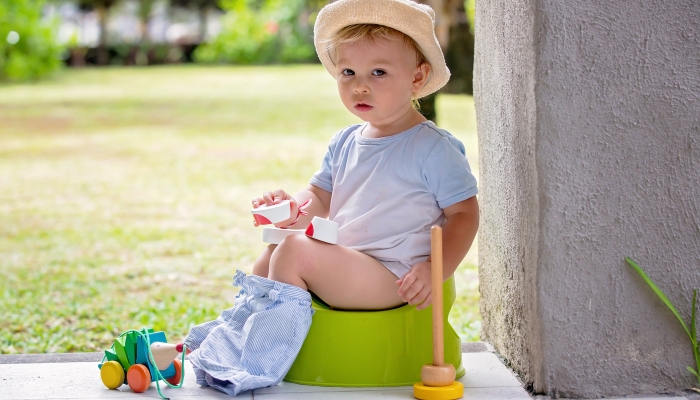
- Once your child has succeeded at potty training in the home, it’s time to head out into the world and attempt potty training on the go.
- You may feel nervous about your first trips out with a newly potty trained child, but this is a rite of passage that all toddlers (and parents) go through.
- It’s no big deal if your child has an accident. Stay calm, deal with the mess, and continue with your day.
- Potty training doesn’t need to keep you locked up at home. You and your child can continue to have fun out and about while tackling this milestone.
Potty training is a parenting milestone many can’t wait to get through. Though potty training itself might seem like hard work, your life will be much easier once diapers are behind you. No more late-night diaper changes, poonamis, or heavy diaper bags!
Potty training while traveling might seem daunting, but your kid will soon get the hang of it. After spending a few days stuck at home potty training, you’re probably keen to reenter society and see how civilization has coped without you.
While you might be fine cleaning up pee puddles at home, you probably feel nervous about accidents at friends’ houses and public places. You can’t remain prisoners in your home forever, so it’s time to take the show on the road. With some forward planning, a well-packed potty training bag, and a can-do attitude, you’ll be able to go out and about while potty training your little one.
Preparing for Potty Training on the Go
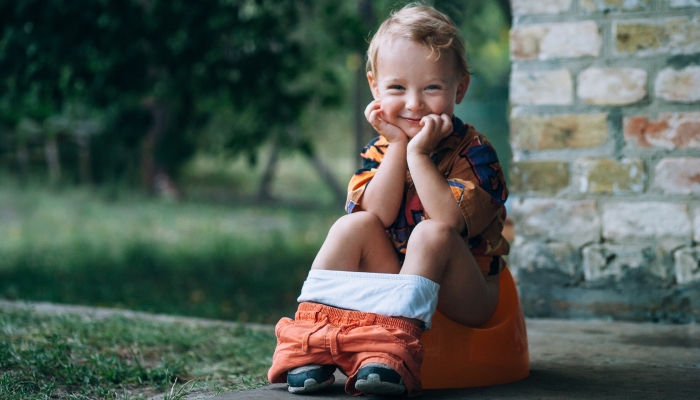
For your first few trips out of the house, pick potty-training-friendly places to visit. Outdoor spaces are ideal for potty training because cleanup is easier outdoors. A park with public restrooms, for example, is a perfect first trip with your newly potty-trained toddler. Children’s centers are another great option because they are usually designed to be wipe-clean, and the staff will be well-versed in toilet accidents.
Packing Essentials
You’re so close to being diaper bag-free, but for now, you’ll still need to carry a bag filled with toilet training essentials. Though lugging a heavy bag around might feel like a hassle, it’s much easier than being caught short when you’re out of the house.
Here are some potty training essentials that will make your life easier when you’re out and about:
- Easy to remove clothing: Leave those fiddly dungarees at home. Your potty training toddler might not give you much notice of their need to pee, so you’ll want clothes that can be whipped off in an instant.
- A portable potty: Portable potties have undoubtedly made life much easier for modern moms. A portable potty seat can be used as a standalone potty wherever you are, taking the stress out of traveling. Some portable potties also double up as a child-size toilet seat, turning a regular toilet into a kid-friendly place to do business.
- Plenty of diaper wipes: It’s worthwhile carrying a stash of diaper wipes even after your child is potty trained. Your kid is likely to make a mess in their pants at some point, and you’ll be thankful for the wipes when that day arises.
- Spare clothes: A change of clothes is a must, even if you’re only popping out someplace local. Choose extra clothes that won’t take up too much space in your bag. It’s always better to take too much than too little, especially when it comes to spare clothing. It’s not uncommon for potty training toddlers to have more than one accident a day. You may find your child is more prone to accidents when you’re out because they’re distracted and don’t want to stop what they’re doing to go to the restroom.
- Wet bags for any dirty clothes: If your child does have an accident, you’ll be glad you have spare wet bags on hand. That way, you can lock away any bad odors and mess until you’re back home.
- Hand sanitizer: It’s always worth carrying hand sanitizer when you’re going to be using public bathrooms. With a potty training child, you’re likely to visit lots of public toilets, and some will be nicer than others. Hand sanitizer will be a life-saver when there’s no soap in the public restroom.
Mentally Preparing Your Child
Potty training is a big developmental leap for your child. It can take a while for children to get the hang of potty training, and public bathrooms can often be a sticking point. Some kids are perfectly happy using the toilet at home, but point-blank refuse to visit public toilets. The unfamiliar environment, the presence of other people, and the noisy hand-dryers are just some of the things that make young children feel uncomfortable.
It may help to prepare your child in advance for using different bathrooms. Another way to prepare your child for visiting a public toilet is to visit them yourself. If your child has grown up visiting public restrooms with you, they will be well used to this environment by the time they’re old enough to take the throne.
One issue with public toilets is that they’re designed for adult-sized bottoms, so young children may feel unstable balancing upon the seat. Invest in a portable potty that doubles up as a toilet folding potty seat so your child can use the toilet comfortably.
Strategies for Different Settings
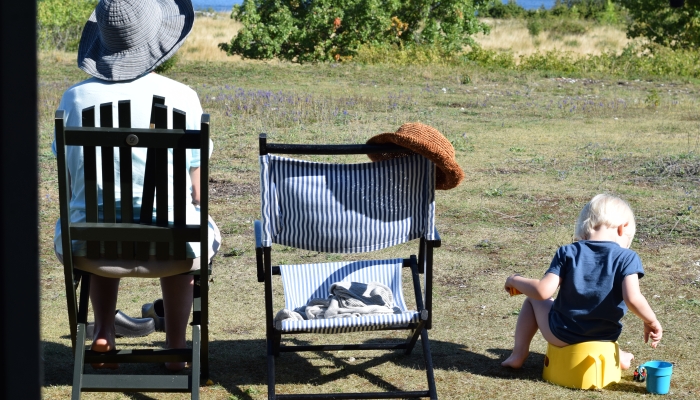
Potty Training While Traveling
Potty training while traveling can be tricky, but it’s definitely manageable. As long as you plan ahead, lower your expectations, and prepare for some last-minute toilet dashes, you’ll be absolutely fine. Here are some tips to help with potty training while traveling:
- Try before you set off: Before you leave the house, encourage your potty training toddler to try going to the bathroom. Sometimes, they may not feel they need it and then surprise themselves by doing something once they get there.
- Take a travel potty: A travel potty is the perfect travel companion and will make toilet training easy. You can use a portable potty by the side of the road on road trips, in a plane bathroom, and at a hotel, so it’s perfect for taking on vacation.
- Offer regular toilet breaks: Make sure you offer your child plenty of opportunities to use the bathroom. You should aim to offer a toilet break every hour or so to begin with; this should help reduce accidents. This may be tricky on a long car ride, but it will help avoid accidents on the journey.
Potty Training in Public Spaces
While potty training in public spaces may feel daunting, remember that everybody in that public space went through potty training once. Your child will soon learn this crucial life skill, and heading into public spaces is an important part of the learning stage that simply can’t be avoided. Take a look at these helpful tips for potty training in public spaces:
- Pick venues carefully: While you’re going through the transitional period between diapers and being fully toilet trained, it makes sense to stick to family-friendly spaces if possible. Outdoor venues are perfect, and indoor spaces geared toward families are a close second.
- Locate the toilets early on: As soon as you arrive, even before you need them, find out where the public toilet is located. That way, you won’t have a mad panic trying to find them in an emergency. Children pick up on our moods, so it’s best to avoid any stress or anxiety. Knowing where the toilets are makes last-minute toilet dashes a little less stressful.
- Take regular toilet trips: If you ask your toddler if they need the bathroom, they’re likely to say no, and then be desperate for it ten minutes later. Toddlers are busy, so they don’t want to interrupt their fun to visit the bathroom. Instead of asking your child if they need the bathroom, it may be more successful to tell them it’s time to go.
- Try to hide your disgust at the state of public restrooms: Some public toilets are lovely, but most aren’t. Remember, your child is always learning from you. They pick up on facial expressions you don’t even realize you’re making. If a restroom isn’t up to scratch, try to hide your horror. Focus on practicing good hygiene rather than saying how gross it is.
- Protect your child’s dignity: There may be some moments where it is simply impossible to offer your child privacy (for example, if they’ve had an accident at a playpark with no restroom), but when you can give your child privacy, you should. Don’t have them use the potty in front of friends, family, or strangers; instead, teach them the importance of privacy.
Handling Accidents On the Go
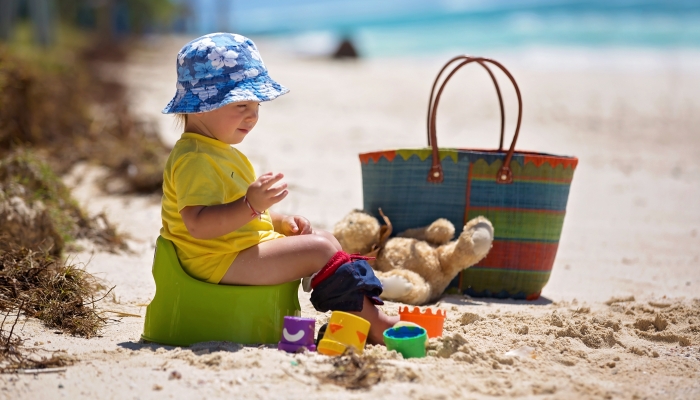
Immediate Response
Firstly, accidents happen, especially when you’re potty training. It is natural and expected that your child will have accidents. The potty training process is not linear; there will be ups and downs. Potty training regressions are normal, and most kids experience them at some point. Your kid will surprise you with accidents long after you think they’re fully potty trained.
The most important thing when it comes to dealing with your child’s accidents is to avoid the use of shame. Don’t tell your child off or discipline them for having a toilet accident. Don’t act disgusted or make a point of acting annoyed. Instead, calmly remind your child to use the potty when they need to go.
Be mindful of your tone, body language, and facial expression because toddlers are good at picking up on these unspoken cues. Make a mental note to take your kid to the bathroom sooner next time.
Cleaning up a potty training accident
Use paper towels or toilet paper to soak up as much pee as possible. You’ll want to do this ASAP to reduce the risk of someone slipping in it. Once you’ve cleared the puddle, you can use a baby wipe or antibacterial wipe to clean the floor.
If it’s a code brown, you’ll need to use a baby wipe or tissue to remove the offending poop. If you’re near a toilet, you can dispose of it there. If not, your wet bags will come in handy. Be sure to use antibacterial wipes to clear up any remaining mess before leaving the scene of the crime.
Learning From Accidents
One of the best potty training tips out there is don’t focus on the accidents; instead, focus on the successes. If someone asks how potty training is going in front of your kid, don’t list off the accidents; rather, proudly tell of all the successful toilet trips. Kids feel shame when we list their failings, so it’s important to focus on the things they’ve done right.
It may be possible to pinpoint why the accident happened. Had you left it too long before toilet trips, or should you have added in an extra toilet break after your child had a huge drink? Be prepared to offer more frequent toilet trips next time you go out.
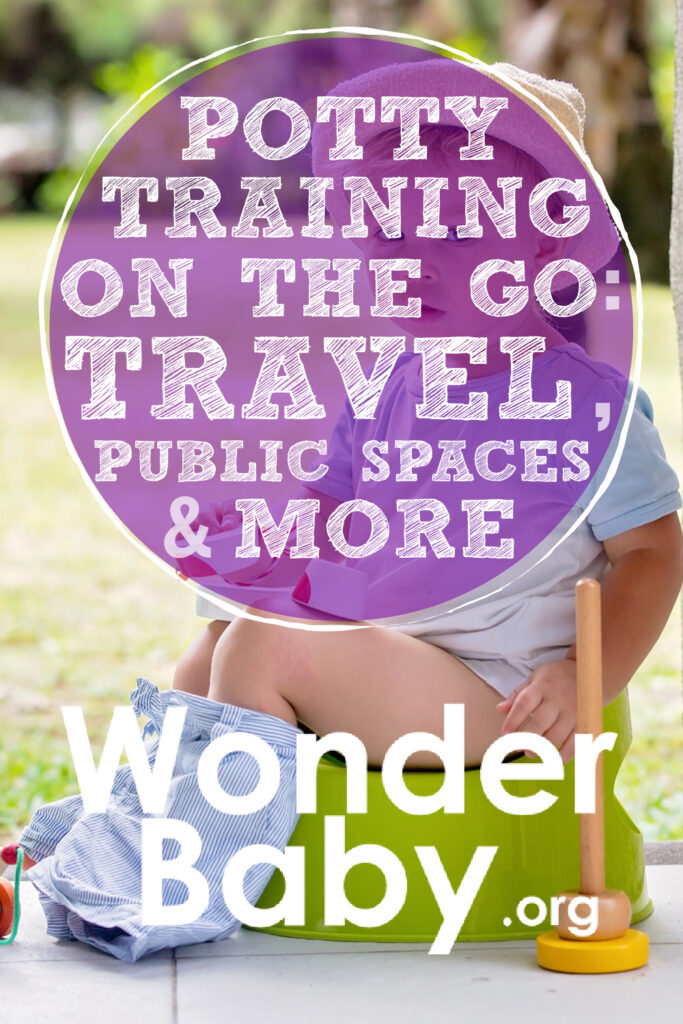
Related Posts
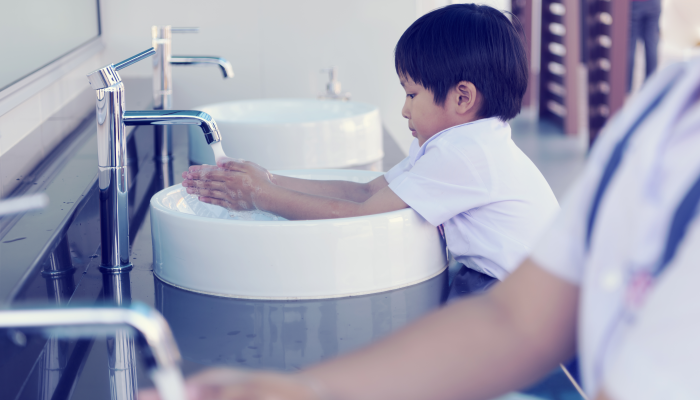
IEPs, Potty Training
7 Sample Toileting IEP Goals
Toileting IEP goals should address the specific needs and abilities of each child. Be flexible and patient as your child works on their toileting skills.
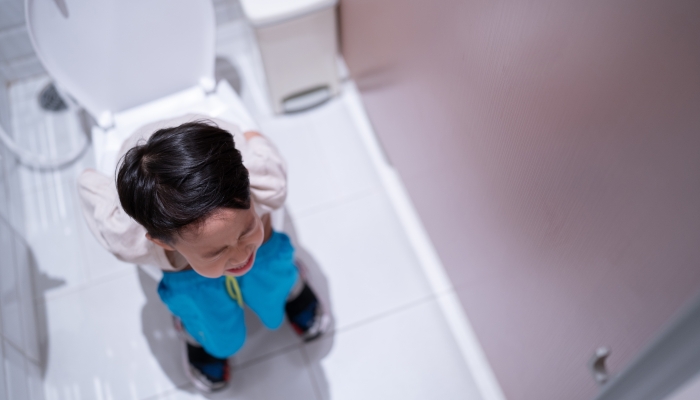
Potty Training
How To Deal With Constipation When Potty Training
Constipation is common amongst children of potty training age. Many children suffer from potty training constipation, but there are things you can do to help.
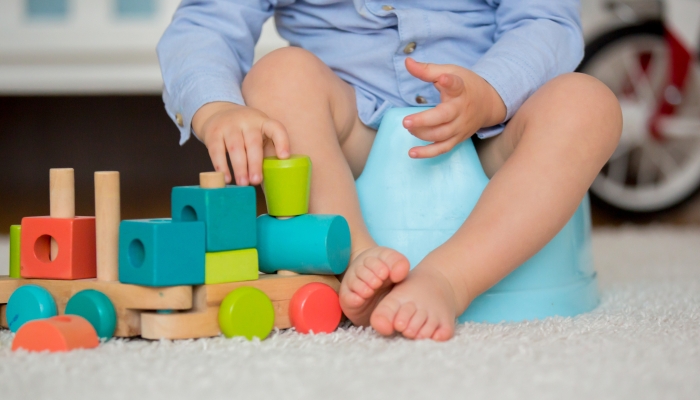
Potty Training
5 Potty Training Games To Make Potty Training Fun
Learning to use the toilet doesn’t have to feel like hard work. There are lots of potty training games you can play with your toddler to make learning fun.